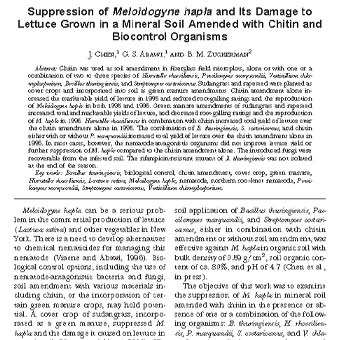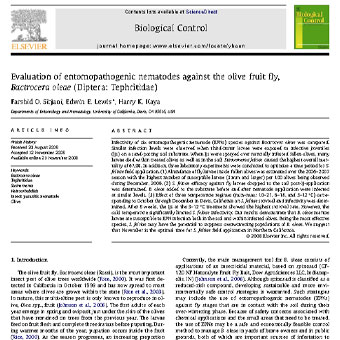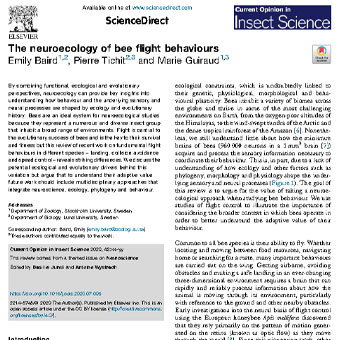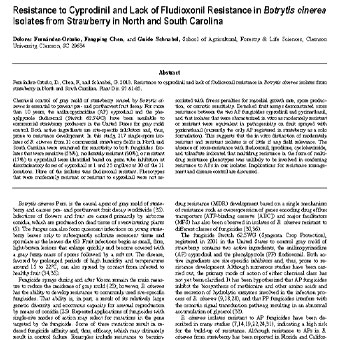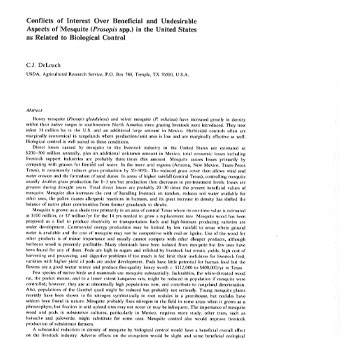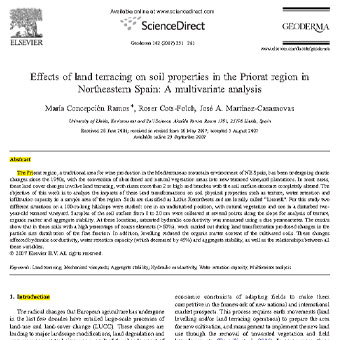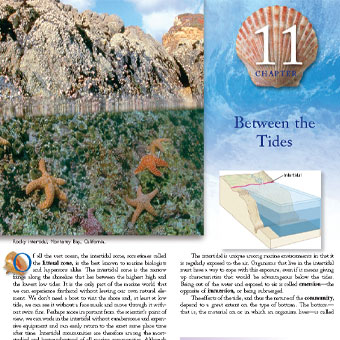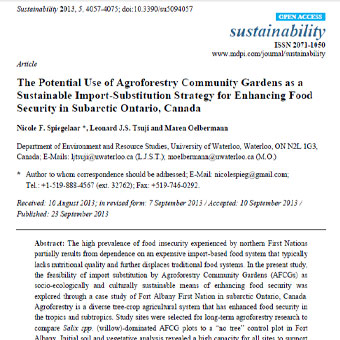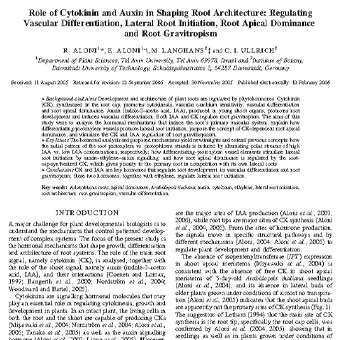عنوان فارسی مقاله:مهار Meloidogyne hapla و خسارت آن بر کاهوی رشد کشت شده در خاکهای معدنی اصلاح شده با کیتین و ارگانیسمهای کنترل بیولوژیک
چکیده
کیتین به عنوان یک ماده اصلاح کننده خاک در میکروپلات های مزرعهای فایبر گلاس به صورت منفرد و یا با یک یا دو تا سه گونه Hirsutella rhossiliensis, Paecilomyces marquandii,، Verticillium chlamydosporium, Bacillus thuringiensis, Streptomyces costaricanus مورد استفاده قرار گرفت. سودان گراس و کلزا به صورت گیاهان پوششی استفاده شده و در خاک به صورت کود سبز قرار گرفتند. ماده اصلاحی کیتین به تنهایی موجب افزایش عملکرد کاهو در ۱۹۹۵ شده و موجب کاهش گال ریشه وتولید مثل Meloidogyne hapla در دو سال ۱۹۹۵ و ۱۹۹۶ شد. اصلاح کنندههای کود سبز سودانگراس و کلزا موجب افزایش عملکرد کل کاهو شده و کاهش گال ریشه و تولید مثل M. hapla در ۱۹۹۶ شد. Hirsutella rhossiliensis همراه با کیتین موجب افزایش عملکرد کل کاهو نسبت به اصلاح کننده کیتین در ۱۹۹۵ شد. ترکیب B. thuringiensis, S. costaricanus, و کیتین همراه با و بدون P. marquandii موجب افزایش عملکرد کل کاهو نسبت به اصلاخ کننده کیتین به تنهایی در ۱۹۹۶ شد. در بیشتر موارد، ارگانیسمهای آنتاگونیست نماتد موجب بهبود عملکرد کاهو و یا سرکوب M. hapla در مقایسه با تنها کیتین نشدند. قارچهای وارده شده از خاک آلوده قابل ریکاوری بودند. موتانت یا جهش یافته مقاوم به ریفامپین B. thuringiensis در انتهای فصل ایزوله نشد(مهار Meloidogyne hapla و خسارت آن).
- لینک دانلود فایل بلافاصله بعد از پرداخت وجه به نمایش در خواهد آمد.
- همچنین لینک دانلود به ایمیل شما ارسال خواهد شد به همین دلیل ایمیل خود را به دقت وارد نمایید.
- ممکن است ایمیل ارسالی به پوشه اسپم یا Bulk ایمیل شما ارسال شده باشد.
- در صورتی که به هر دلیلی موفق به دانلود فایل مورد نظر نشدید با ما تماس بگیرید.
 متن به فارسی | ترجمه مقالات و متون علمی | ترجمه و دانلود مقالات و انواع متون علمی و ادبی و پذیرش سفارش ترجمه
متن به فارسی | ترجمه مقالات و متون علمی | ترجمه و دانلود مقالات و انواع متون علمی و ادبی و پذیرش سفارش ترجمه
